This answer is based on Ian Robinson's post about time-based versioned graphs.
I don't know if this answer covers ALL the requirements of the question, but I believe that can provide some insights.
Also, I'm considering you are only interested in structural versioning (that is: you are not interested in queries about the changes of the domain user's name over the time). Finally, I'm using a partial representation of your graph model, but I believe that the concepts shown here can be applied in the whole graph.
The initial graph state:
Considering this Cypher to create an initial graph state:
CREATE (admin:Admin)
CREATE (person1:Person {person_id : 1})
CREATE (person2:Person {person_id : 2})
CREATE (person3:Person {person_id : 3})
CREATE (domain1:Domain {domain_id : 1})
CREATE (device1:Device {device_id : 1})
CREATE (person1)-[:ADMIN {from : 0, to : 1000}]->(admin)
CREATE (person1)-[:CONNECTED_DEVICE {from : 0, to : 1000}]->(device1)
CREATE (domain1)-[:MEMBER]->(person1)
CREATE (domain1)-[:MEMBER]->(person2)
CREATE (domain1)-[:MEMBER]->(person3)
Result:

The above graph has 3 person nodes. These nodes are members of a domain node. The person node with person_id = 1 is connected to a device with device_id = 1. Also, person_id = 1 is the current administrator. The properties from and to inside the :ADMIN and :CONNECTED_DEVICE relationships are used to manage the history of the graph structure. from is representing a start point in time and to an end point in time. For simplification purpose I'm using 0 as the initial time of the graph and 1000 as the end-of-time constant. In a real world graph the current time in milliseconds can be used to represent time points. Also, Long.MAX_VALUE can be used instead as the EOT constant. A relationship with to = 1000 means there is no current upper bound to the period associated with it.
Queries:
With this graph, to get the current administrator I can do:
MATCH (person:Person)-[:ADMIN {to:1000}]->(:Admin)
RETURN person
The result will be:
╒═══════════════╕
│"person" │
╞═══════════════╡
│{"person_id":1}│
└───────────────┘
Given a device, to get the current connected user:
MATCH (:Device {device_id : 1})<-[:CONNECTED_DEVICE {to : 1000}]-(person:Person)
RETURN person
Resulting:
╒═══════════════╕
│"person" │
╞═══════════════╡
│{"person_id":1}│
└───────────────┘
To query the current administrator and the current person connected to a device the End-Of-Time constant is used.
Query the device connect / disconnect events:
MATCH (device:Device {device_id : 1})<-[r:CONNECTED_DEVICE]-(person:Person)
RETURN person AS person, device AS device, r.from AS from, r.to AS to
ORDER BY r.from
Resulting:
╒═══════════════╤═══════════════╤══════╤════╕
│"person" │"device" │"from"│"to"│
╞═══════════════╪═══════════════╪══════╪════╡
│{"person_id":1}│{"device_id":1}│0 │1000│
└───────────────┴───────────────┴──────┴────┘
The above result shows that person_id = 1 is connected to device_id = 1 of the beginning until today.
Changing the graph structure
Consider that the current time point is 30. Now user_id = 1 is disconnecting from device_id = 1. user_id = 2 will connect to it. To represent this structural change, I will run the below query:
// Get the current connected person
MATCH (person1:Person)-[old:CONNECTED_DEVICE {to : 1000}]->(device:Device {device_id : 1})
// get person_id = 2
MATCH (person2:Person {person_id : 2})
// set 30 as the end time of the connection between person_id = 1 and device_id = 1
SET old.to = 30
// set person_id = 2 as the current connected user to device_id = 1
// (from time point 31 to now)
CREATE (person2)-[:CONNECTED_DEVICE {from : 31, to: 1000}]->(device)
The resultant graph will be:

After this structural change, the connection history of device_id = 1 will be:
MATCH (device:Device {device_id : 1})<-[r:CONNECTED_DEVICE]-(person:Person)
RETURN person AS person, device AS device, r.from AS from, r.to AS to
ORDER BY r.from
╒═══════════════╤═══════════════╤══════╤════╕
│"person" │"device" │"from"│"to"│
╞═══════════════╪═══════════════╪══════╪════╡
│{"person_id":1}│{"device_id":1}│0 │30 │
├───────────────┼───────────────┼──────┼────┤
│{"person_id":2}│{"device_id":1}│31 │1000│
└───────────────┴───────────────┴──────┴────┘
The above result shows that user_id = 1 was connected to device_id = 1 from 0 to 30 time. person_id = 2 is currently connected to device_id = 1.
Now the current person connected to device_id = 1 is person_id = 2:
MATCH (:Device {device_id : 1})<-[:CONNECTED_DEVICE {to : 1000}]-(person:Person)
RETURN person
╒═══════════════╕
│"person" │
╞═══════════════╡
│{"person_id":2}│
└───────────────┘
The same approach can be applied to manage the admin history.
Obviously this approach has some downsides:
- Need to manage a set of extra relationships
- More expensive queries
- More complex queries
But if you really need a versioning schema I believe this approach is a good option or (at least) a good start point.


